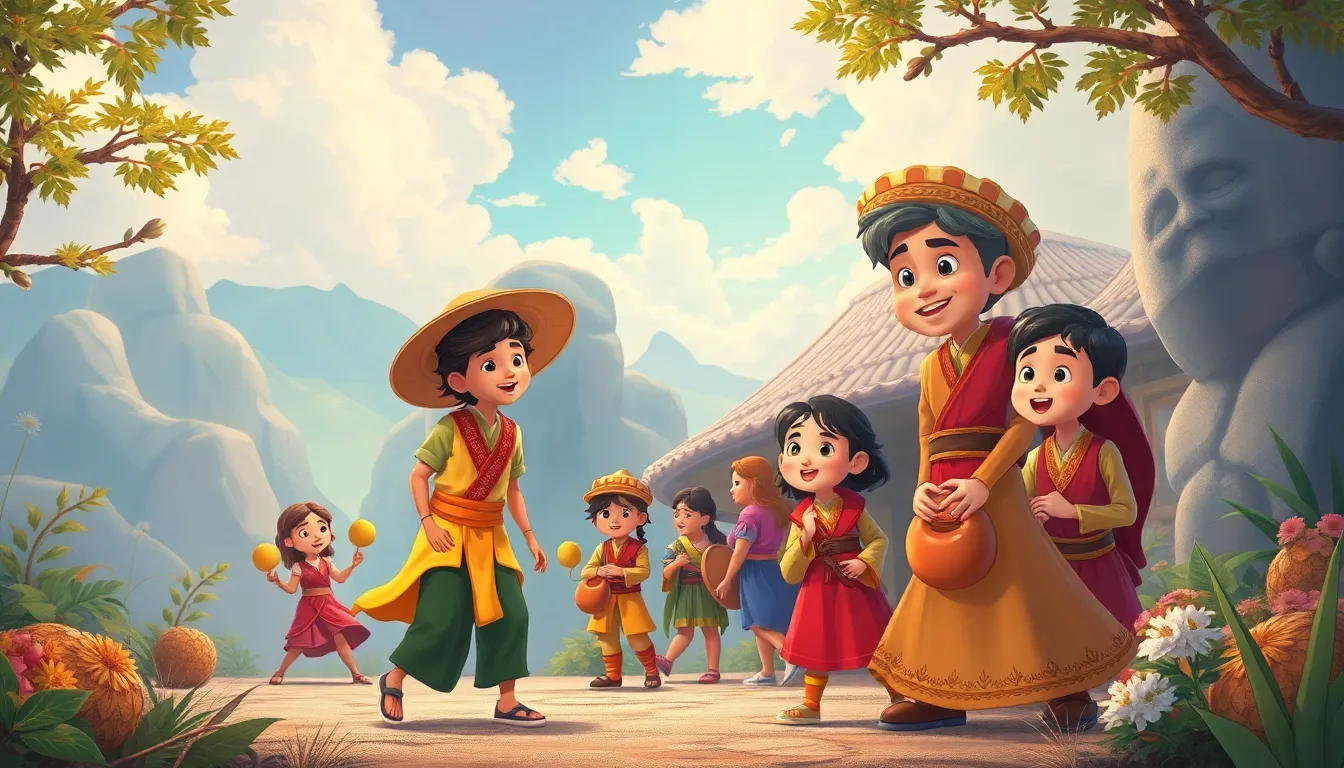
🌍 Amazing World Traditions
Introduction
Every country, town, and even a small village has its own Traditions—special ways of doing things that have been passed down from grandparents to parents to kids like you. These customs help people remember their Heritage (the stories, ideas, and objects that belong to a group) and bring families and friends together. Let’s travel the globe and discover a few wonderful traditions, learn new words, and even try a tiny experiment!
1. Festivals of Light
What It Is
Many cultures celebrate the return of longer days with festivals that use Luminescent (bright‑shining) lights.
| Country | Festival | Main Activity |
|---|---|---|
| India | Diwali | Lighting oil lamps, sharing sweets |
| China | Lantern Festival | Releasing colorful paper lanterns |
| Ireland | St. Brigid’s Day | Making Candle‑lit processions |
Cause and Effect
Why do people use lights? In winter the sun is low, so bright lights Cheer Up (make people feel happier) and Symbolize (represent) hope and the victory of good over darkness.
Did You Know?
The word diya (the small oil lamp used at Diwali) comes from the Sanskrit word for “light.”
2. Food Traditions
What It Is
Food is a tasty way to show love and share stories. Different places have special dishes that are only prepared at certain times.
- Japan – Mochi (sticky rice cakes) are pounded together during New Year to bring good luck.
- Mexico – Pan de Muerto (bread of the dead) is baked for Día De Los Muertos to honor ancestors.
- Ethiopia – Injera (spongy flatbread) is eaten with hands, showing community and togetherness.
Cause and Effect
Cooking a special dish often Marks (signifies) a season or a memory. When families eat the same food every year, they create a Shared Identity—a feeling of belonging to the same group.
Mini Experiment: Taste‑test Adventure
- Ask an adult to help you gather three small, safe foods from different cultures (e.g., a piece of sushi, a tortilla, a tiny piece of naan).
- Taste each one and write down three words that describe the flavor (sweet, salty, spicy, etc.).
- Share your notes with a friend or family member and guess where each food comes from!
3. Greeting Customs
What It Is
How we say “hello” can be very different!
- France – A light kiss on each cheek, called a Bise.
- Kenya – A warm handshake followed by a Greeting of “Jambo!” (meaning “Hello!”).
- South Korea – A respectful bow, sometimes with hands together, known as Jeol.
Cause and Effect
Greeting styles develop from Social Norms (unwritten rules about behavior). They help people feel Respected (valued) and Connected.
Did You Know?
In some Pacific islands, people greet each other by touching foreheads and noses—called a Hongi—to share the breath of life!
4. Stories & Folklore
What It Is
Every culture has Folklore—traditional stories that teach lessons or explain natural events.
- Native American – The tale of the